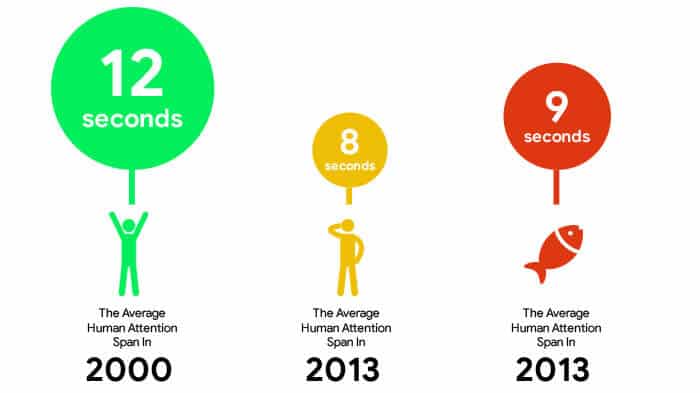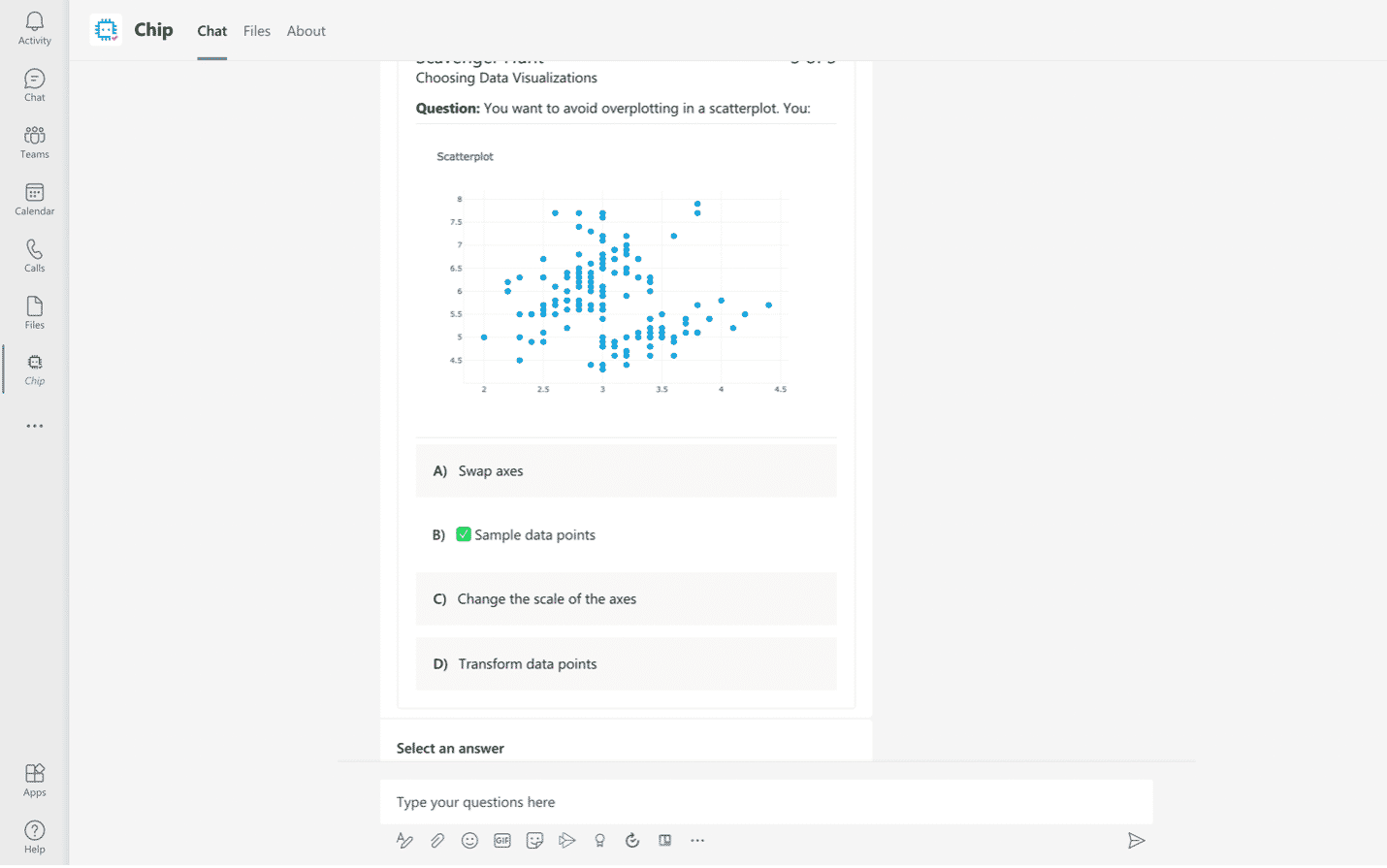QuantHub Learning 101 is a series that explores the learning science behind what makes our product effective. This post discusses microlearning as the solution to overloaded calendars and short attention spans.
Why Microlearning Makes Sense

revealed that 87% of organizations are experiencing skill gaps or expect them to emerge in the coming years.
So, it’s not a secret that Upskilling is no longer a nice-to-have, but a need-to-have. The World Economic Forum predicted that there would be a change in 42% of in-demand skills between 2018 and 2022. Given the pressure cooker that has been the last year and a half, I’d say that statistic is a tad too small.
Organizations know that upskilling and reskilling is cheaper than hiring to fill those gaps. For instance, research conducted by Josh Bersin revealed that simply reskilling an employee as a software engineer can have a savings of $116,000 over three years.
These facts pose a stark contrast to the following headliner you’ve read or said in the last week:
“I’ve had 30 minutes without a meeting this week.”
The harsh reality is that people just don’t have the time to learn.
The very thing needed to survive in this economy is dangled like a carrot as we trudge on our hamster wheels of zoom meetings and growing inboxes. The 2021 Learning Trends Report revealed that 49% of all learners state they don’t have time to learn while 61% say that “time” is the main obstacle to learning new skills.
To add insult to injury, a Microsoft study confirmed that humans have a shorter attention span than a goldfish! It has shrunk from 12 seconds to 8 seconds and will continue with a downward trajectory with every ping, ding, and beep.
These obstacles don’t change the growing need for the workforce to catch up.
How are we supposed to upskill the workforce given that time and attention is in such short supply?
The answer was clear to the founders here at QuantHub: Microlearning. The most basic definition of microlearning is that it is a mode of learning that breaks down larger concepts into much smaller, bite-sized pieces. Microlearning works because of how our brains work. ELearning Industry makes a solid case for microlearning by showing that our brains process information better with a microlearning approach. We learn best when
- We are engaged
- Information is delivered in short bursts
- Information is delivered in progression called “scaffolding”
- Spaced Repetition is used to reinforce learning
Microlearning can easily meet all of these requirements.
Microlearning is nothing new. Kids and adults learn this way all the time without realizing it. Here’s how it goes:
Little Johnny says, “Hey mom, what’s that?”
Mom says, “It’s a cocoon. A caterpillar makes it so that it can change into a butterfly.”
“Okay!” Exclaims Johnny and then skips off to the next interesting thing.
Talk about short attention spans! Regardless, the child just learned not only a new word but a concept of an animal changing into something else. That concept will be foundational for their Earth Science studies for years to come, and yet it took no more than 30 seconds.
Microlearning has gained a lot of momentum in Learning and Development for its benefits and ability to integrate into even the busiest schedules.
Here are 8 benefits that make microlearning QuantHub’s choice for instructional content delivery:
1. Based in Memory and Learning Science
Short-term memory can hold only 7 new items at a time. Focusing on fewer items at a time increases the likelihood of transferring information from short-term memory to long-term. Content in microlearning is designed to include fewer concepts that can be focused on with short amounts of time which is best for maintaining attention.

Attention plays a huge role in memory. Put simply, learning cannot occur when attention is divided. Yet, human attention is constantly being divided. Short increments of learning ensure the least amount of resistance. Those small doses of learning combined with short periods of time allow for learners to capitalize on metacognition. Metacognition is essentially thinking about thinking. When given the time to process learned information, knowledge retention improves significantly.
2. Allows content to grow and evolve quickly
Microlearning holds a significant appeal for us because of its ability to be adapted and expanded quickly. We knew that data upskilling would be a tough skill group to tackle because of its constant evolution. Microlearning allows us to quickly modify content to the changing needs of the field and our learners. A few years ago, people had never even heard of “Data Translators” and yet its slated to be one of the fastest growing hiring trends over the next few years. Traditional courses cannot evolve as quickly as the field, but we can with microlearning!
3. Allows for different forms of content
Videos, podcasts, articles, and practical exercises can all be interwoven into these short bursts of learning. We use a wide variety of sources and formats to convey key concepts. We are not limited to a specific format that would exclude certain learning styles. Traditional learning tends to stick to one form whether it is video, text, or in-person. Microlearning can pull from any source of content to drive the point home.
4. Provides frictionless learning
Microlearning does not need to interrupt a workflow. It does not require its own time block on your calendar. It can happen before you even get out of bed or while you’re waiting for other team members to show up to a meeting. Microlearning works for most people because it can easily fit into whatever time is available.
QuantHub has even gone so far as to develop a chatbot that allows learning to happen without departing from your workflow at all. In our Microsoft Teams Chip App, you can interact with our friendly bot to study new data skills, review recommended resources, and test your knowledge. This in-the-flow of work approach makes learning feel more seamless and approachable.

5. Provides frictionless learning
Traditional courses allow for little flexibility in meeting the unique needs of individuals. Microlearning is often learner-led with a “choose-your-path” format that works better for engagement and overall learning outcomes. Learners can choose what they want to learn when they want to learn it instead of having to sift through information in search of what is relevant to them.
6. Ability to gamify
Gamification and microlearning go hand in hand. Learners can earn points, achieve higher levels, lose lives, etc. Gamification motivates learners through an intrinsic reinforcement loop. Earning points and unlocking higher levels releases a little dopamine, your brain’s pleasure neurotransmitter. You end up wanting more of that feeling and so you engage with the game of learning even more. The result: fun and learning at the same time!
7. Ability to reach all audiences
Regardless of time, location, and ability level, microlearning can work for any learner. Microlearning is designed to circumvent the usual barriers to learning and reach every individual. As long as you have a device with internet—phone, tablet, computer—you can learn!
8. Lends itself to continuous improvement mindset
The sky is the limit! We believe that learning doesn’t have an endpoint. We can always grow and gain new skills and brush up on skills we may have forgotten. Microlearning allows for you to achieve small successes that lead to big achievements in one continuous action: learning.
Yeah, but how is watching a short YouTube video actually learning?
A common argument against microlearning is that watching a short video or reading a short article often doesn’t translate to actual learning.
And we agree. That is why we utilize frequent testing and active recall in a highly optimized AI powered spaced repetition format. You can read more about how we use Spaced Repetition here.
Learners answer scenario-based questions while studying a skill, prompting them to actively engage and apply the concept they are learning instead of just passively consuming the information.
In Conclusion, Microlearning is the Best Path Forward.
The truth is, it’s easy to feel like the data skills gap companies are facing is too overwhelming to make meaningful progress.
There’s not time to provide the weeks of training required to close it. That’s why we believe microlearning is the way forward. In a time-crunched world with growing skill gaps, microlearning is the bridge between our busy schedules and our need to build new skills.
Ready to see for yourself?! Get a demo.